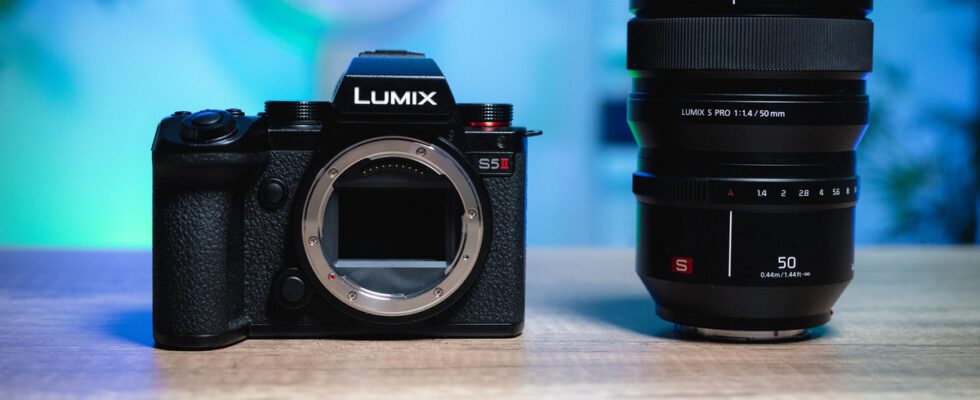The Lumix S5 II is the welcome successor to a hybrid that has allowed Panasonic to ideally position itself in the 24×36 sensor camera market. This case demonstrates that “Pana” has been able to evolve in a very relevant way. We focus today on the analysis of raw files during the increase in sensitivity and on the dynamics of the sensor.
Electronic noise management
The 24.2 Mpx 24×36 sensor does very well with the increase in sensitivity, as we had already noticed in our test. The double native ISO at 100 and 640 ISO allows a reduction in electronic noise from 640 ISO. We then note a very good performance of raw or jpeg files up to 1600 ISO. Smoothing (or noise) starts to really show up at ISO 3200, while remaining very discreet. It is from ISO 6400 that the degradations are felt. For raw, by having a light hand in development, we can easily climb up to 25,600 ISO.

By putting face to face the raw from the Lumix S5 II and the Canon EOS R6 Mark II, which share a sensor of similar dimensions and definition, the electronic “grain” remains less marked at Panasonic. We had already noted that the Lumix granted a less important and more elegant smoothing with the jpegs, and the same observation is therefore maintained with the raw.


Exposure latitude
During our lab tests, we noticed that the sensor of the S5 II does quite respectably, with noise that starts to point towards -3 EV – it is especially at -4 EV that it becomes more pronounced . Regarding the management of highlights, the sensor behaves well up to +2 EV. We can recover a little data beyond that, but we will have to reckon with a significant colorimetric drift.
